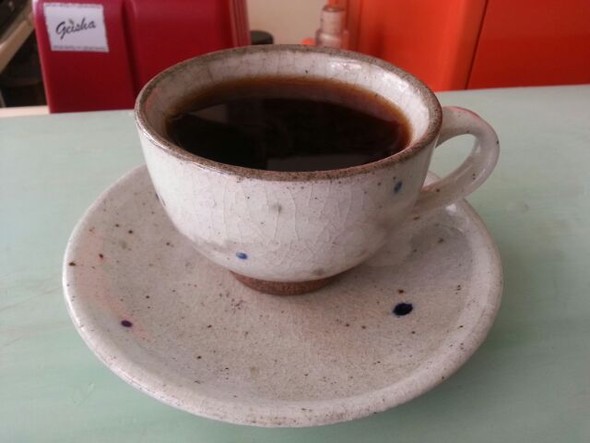A brief introduction and formation process of Java Coffee Sumatra Coffee
Java coffee is produced in Java, Indonesia, and belongs to Arabica coffee. After baking, the bitter taste is very strong and the fragrance is very light, without sourness. Java coffee bitter, alcohol, coupled with the sweet chocolate syrup, Java coffee more mellow smooth, very popular with women!
Java Coffee
Among the coffee-producing Asian countries, Indonesia is one of the most noteworthy. Indonesia is an island country in the Indian Ocean, with islands on both sides of the equator, three of which: Java, Sumatra and Sulawesi produce the world's most important coffee. In the mid-17th century, the Dutch brought coffee trees to Ceylon (now known as Sri Lanka) and Java in Indonesia. By the 18th century, Indonesia had become a major producer of coffee, supplying almost all of its high-quality Arabica coffee to Europe. But in the 19th century, coffee rust, which first appeared in Ceylon in 1869, also affected Indonesia. By 1877, most of the coffee fields on the Indonesian islands had been destroyed by rust, and the Dutch had to import another coffee variety from Africa, namely Romstar coffee. It is more resistant to pests and diseases, but the quality is inferior. About 90% of Indonesian coffee today is made up of Romstar beans, about 6.8 million bags a year, and less than 10% of beans are Arabica coffee.
Coffee produced in Indonesia is generally not crowned with the name "Indonesia", but directly crowned with island names, such as Java, Sumatra, etc.
Java coffee is famous for its early years, referring to Arabica coffee formerly produced in Java. It has a rich aroma, low acidity, smooth taste, and with mocha coffee, the result is "Java mocha blend coffee" once popular, synonymous with the best coffee, famous.
Java coffee sold to Europe at that time was a very special coffee. Because it was shipped to European and American countries by sailboat at that time, the journey was long and the speed was slow, so it took a lot of time on the way. Coffee in this case, as if after a special fermentation, taste very unique.
Later, when ships replaced sailboats, people drank fresher coffee beans because of shorter delivery times. But people accustomed to old beans are not used to this fresh taste, so they desperately pursue old Java coffee, so that the Indonesian government and some businessmen deliberately store fresh beans in warehouses for one to two years before selling them to consumers. In fact, the acidity of aged Java beans is reduced to nearly zero compared to fresh beans, while the aroma is more intense. Because of the long storage time, the cost increases a lot, and the quantity is limited, so aged Java has always been a hot commodity in the coffee market. In the 1880s, some unscrupulous traders deliberately tampered with fresh Guatemala or Venezuela beans and sold them at high prices to imitate old Java. It is intolerable that the profiteers dye the coffee beans to make them look more like aged java, but there is no doubt that the dyeing chemicals are poisonous.
Java today produces only a small number of arabica beans, most of which are romsda beans imported from africa after the rust disaster. This coffee has a strong bitter taste after roasting, but the aroma is extremely light. Although the acidity is relatively low and the taste is relatively delicate, it is rarely used for direct drinking. It is often used to blend coffee or to make instant coffee.
Pests and diseases are a terrible thing. They have reduced Brazil's coffee production greatly and repeatedly dominated the international coffee market. They have also caused Sri Lanka, which once planted coffee trees everywhere, to cut down coffee trees and plant coffee all over again. It also makes Java, which is rich in high-quality Arabica coffee, change to Romstar coffee for fear of pest infestation. Arabica Java coffee, which people regard as a treasure, has been far away from people's sight since then. People's infinite favor and pursuit of Java coffee in those years have also been lost since then.
Important Notice :
前街咖啡 FrontStreet Coffee has moved to new addredd:
FrontStreet Coffee Address: 315,Donghua East Road,GuangZhou
Tel:020 38364473
- Prev

The Origin of Kenyan Coffee the benefits of Flavor appreciation to people
People in the coffee industry all think that Kenyan coffee is one of its favorite products because Kenyan coffee contains every feeling we want from a good cup of coffee. It has wonderful and satisfying aromas, well-balanced acidity, well-proportioned particles and excellent fruit flavors. The taste is so unique that there is almost no similar coffee. The characteristics of Kenyan coffee
- Next

The New King of Fine Coffee-- A brief introduction to the Historical characteristics of Rosa Coffee
1 the species of Geisha was discovered in the rose forest of Ethiopia in 1931 and sent to the Coffee Research Institute in Kenya, introduced to Uganda and Tanzania in 1936, introduced to Costa Rica in 1953, and Panama was introduced by Francesca from Dongba Seven Farm Garden in the 1970s. Mr. Serraxin got the seeds from CATIE, Costa Rica, and began to grow Rosa Coffee.
Related
- Detailed explanation of Jadeite planting Land in Panamanian Jadeite Manor introduction to the grading system of Jadeite competitive bidding, Red bid, Green bid and Rose Summer
- Story of Coffee planting in Brenka region of Costa Rica Stonehenge Manor anaerobic heavy honey treatment of flavor mouth
- What's on the barrel of Blue Mountain Coffee beans?
- Can American coffee also pull flowers? How to use hot American style to pull out a good-looking pattern?
- Can you make a cold extract with coffee beans? What is the right proportion for cold-extracted coffee formula?
- Indonesian PWN Gold Mandrine Coffee Origin Features Flavor How to Chong? Mandolin coffee is American.
- A brief introduction to the flavor characteristics of Brazilian yellow bourbon coffee beans
- What is the effect of different water quality on the flavor of cold-extracted coffee? What kind of water is best for brewing coffee?
- Why do you think of Rose Summer whenever you mention Panamanian coffee?
- Introduction to the characteristics of authentic blue mountain coffee bean producing areas? What is the CIB Coffee Authority in Jamaica?

